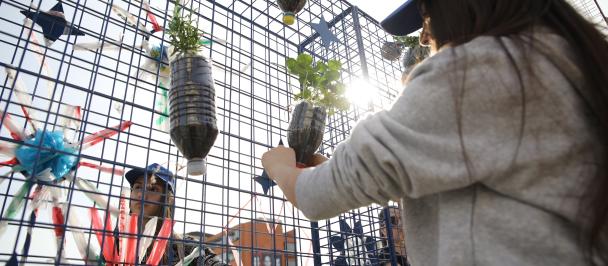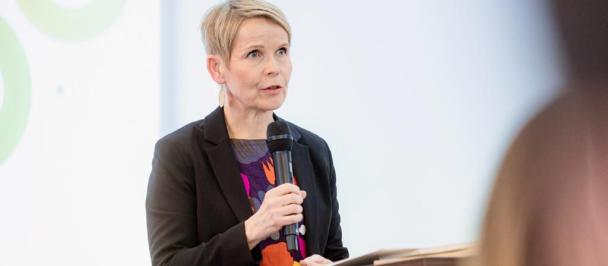Exploring Listening Tools for Participatory and Inclusive Approach
May 30, 2023
As development practitioners, we often find ourselves navigating complex and uncertain situations that require us to understand the context and the needs of the people we aim to serve. How can we collect relevant data from diverse perspectives, analyse and make sense of that data, and design interventions that are participatory and inclusive? In my three years with UNDP Kosovo, I have encountered and familiarized myself with three useful listening tools: Sensemaking, Deep Listening, and Micronarratives.
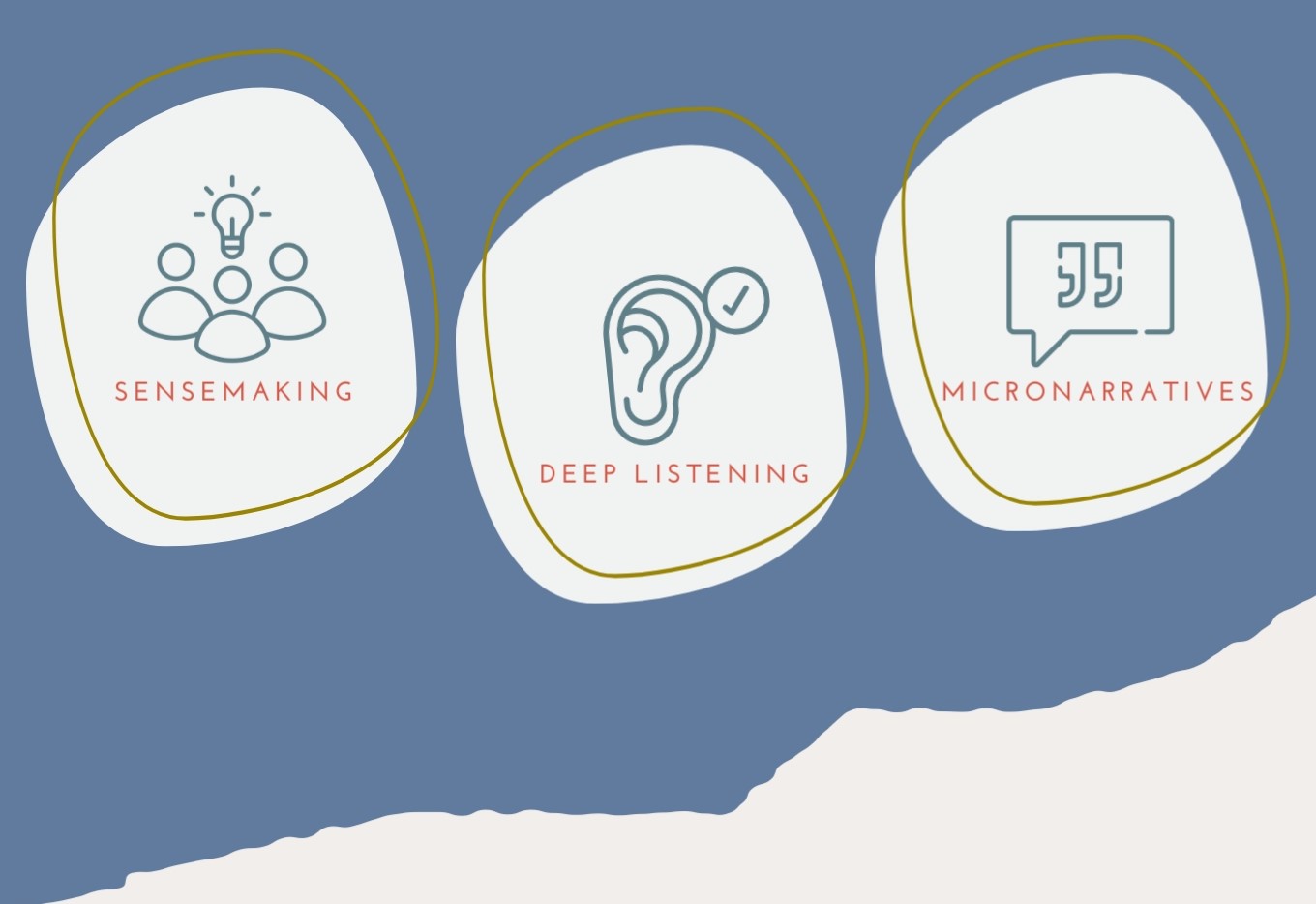
Sensemaking is a process of creating meaning out of complex information. It involves interpreting, synthesizing, and communicating data in coherent and actionable ways by engaging with different perspectives, experiences, and knowledge to co-create a shared understanding of a situation.
Deep listening, on the other hand, is the practice of paying attention to what people are saying with curiosity and openness. It invites us to sense the emotions, intentions, and meanings behind words. By truly listening, we can notice patterns that emerge and create personas that reflect a unified perception, behaviours and thinking patterns of individuals we engage with.
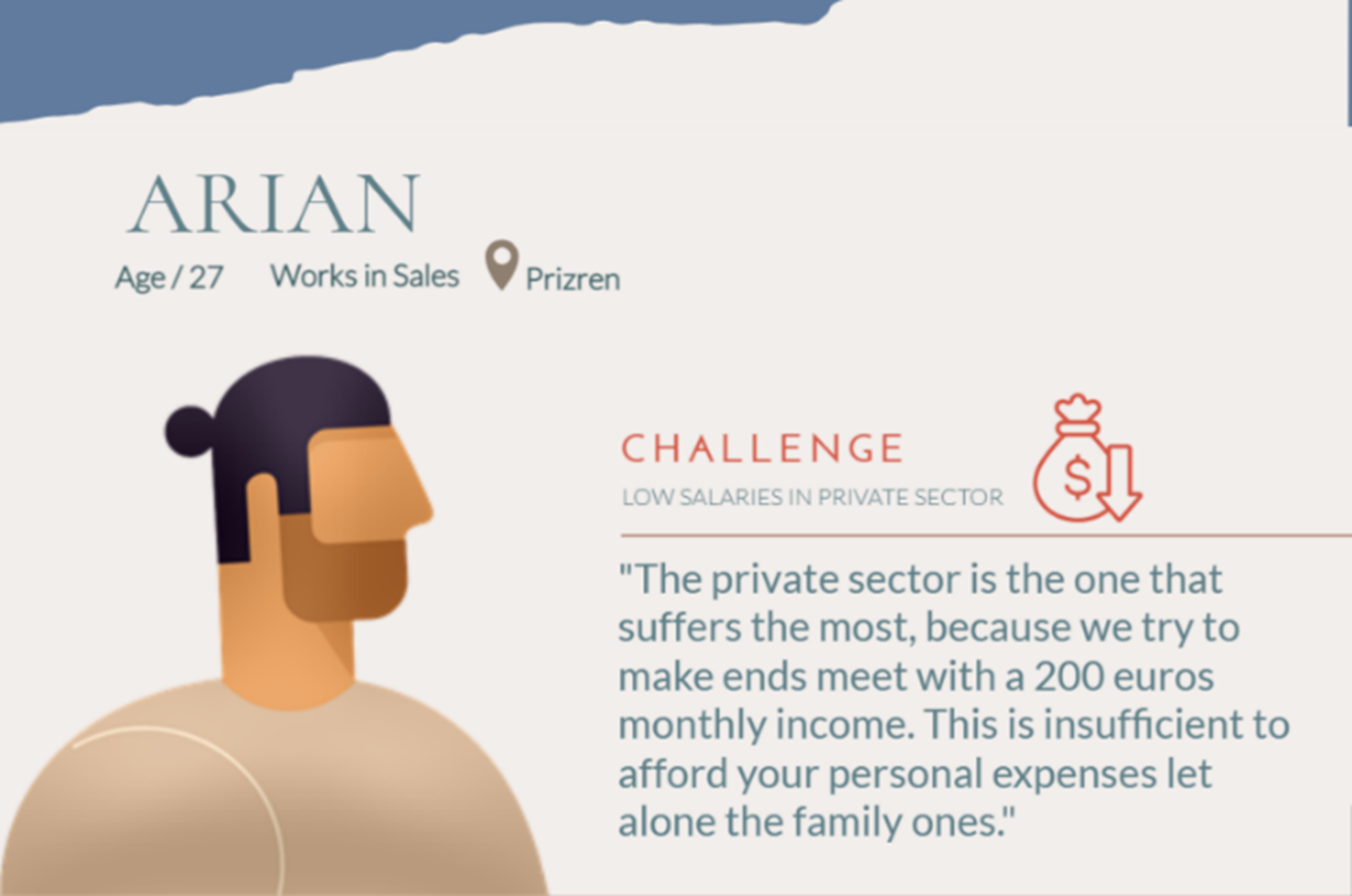
Figure 1 - Excerpt from a persona created through Deep Listening.
Micronarratives is a methodology that involves respondents providing a short story on a certain topic which they situate on triads or dyads to provide quantitative data. This allows the researcher to identify patterns in the stories with the interpretation still in the hands of the storyteller.
In our journey as UNDP Kosovo, we have been trying out these tools over the past three years in different capacities. Recently, we conducted a test run using micronarratives, asking “How is a day in your life” to 350 people living in Kosovo. To some extent, the responses confirmed assumptions we had, such as the increased cost of living is making it harder for families to cope as incomes have not increased simultaneously. However, these narratives also shed light on another crucial aspect—the strength of social networks and the support they provide. To exemplify, one of the narratives captured this duality, as seen below.
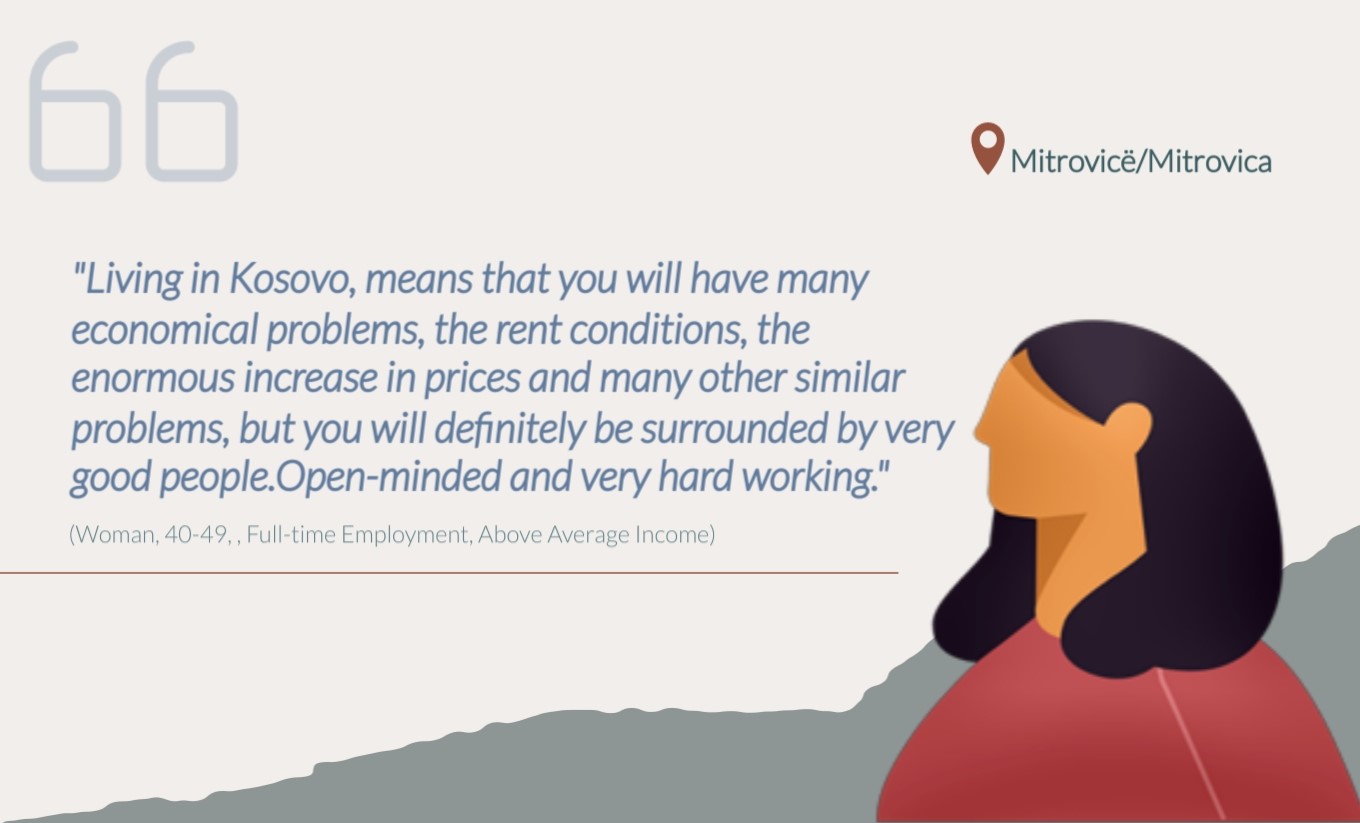
Figure 2 - A representative micronarrative.
As I reflect on these tools and my time with UNDP Kosovo, I recognize that each has its own set of pros and cons, depending on our intent and desired outcome. Micronarratives is probably the form that will bring forward the most honest answers from the target population, but we must be prepared for unexpected or contagious responses that may clash with our stakeholders' expectations.
Deep listening, while providing more qualitative responses, demands significantly more time from the respondents than micronarratives and may run the risk of creating generic personas. Similar to micronarratives, the questions asked will very much affect the outcome, and as it tends to use an interview-based format, it is more structured. Lastly, sensemaking, while powerful, requires careful planning and execution as you gather the information from participants in real-time. While it will be run multiple times with different stakeholders, the intent must be clear from the beginning.
Yet, I have found that these tools are most insightful and effective when used complementary. Micronarratives, when used alone, have the ability to uncover information that may have been previously overlooked. However, when employed in a complementary manner, it can bring life to the numbers in economic assessments. Deep listening and sensemaking also complement each other as in the Social Innovation Platform that UNDP utilizes . By combining approaches, we can create a more holistic and human-centred understanding of the context and the needs by engaging people we aim to help in a participatory and inclusive way.
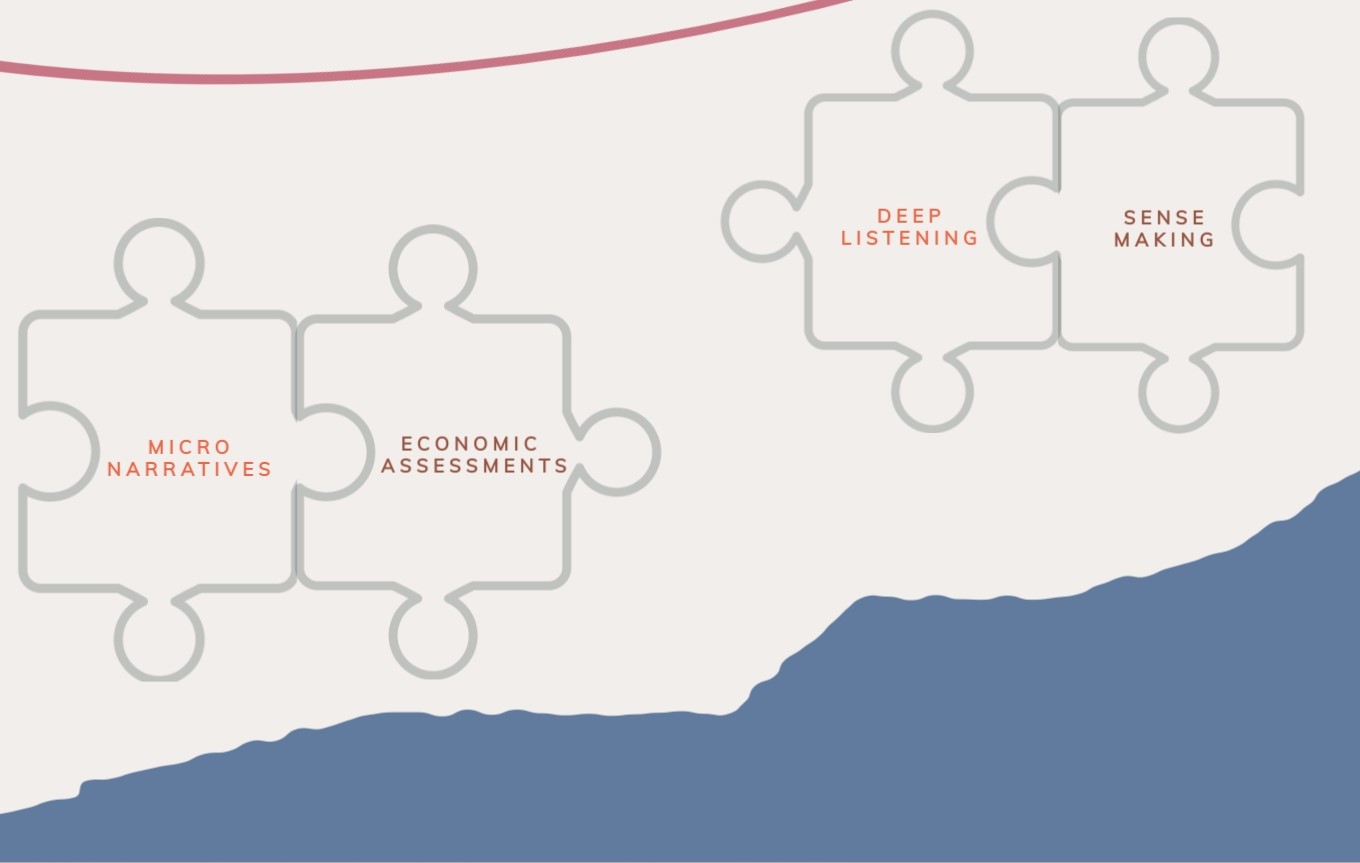
In this three-year journey, and in contemplating about the utilization of these tools, I am starting to think that it is not necessarily about the development of a comprehensive set of specialized capacities, but rather the commitment shown from beginning to end that is most important for utilization. It is the commitment that paves the way for embracing uncertainty and exploring unfamiliar approaches. By doing so, we may open new doors of possibilities, constantly seeking to institutionalize tools and methods that add genuine value to our work.
This is just one small part of the transformative journey that UNDP Kosovo has embarked on fuelled by innovation. Join me in reflecting on our experiences and perspectives. How do we approach data collection, analysis, and design? What valuable insights have emerged from engaging with diverse and potentially unexpected perspectives? And how can we foster a culture of embracing uncertainty within our teams and offices? Write your own reflective piece and share. By harnessing our collective thinking, we can shape an inclusive, forward-thinking, and impactful future.
By Andreas Nord, Programme Support Officer – Inclusive Growth
Andreas Nord started as a UN Youth Volunteer funded by Sweden/SIDA in the role of Socio-Economic Programme Associate with the Inclusive Growth & Climate Resilience Portfolio. After 2 years serving as a UN Youth Volunteer, he continued his engagement with UNDP Kosovo as a UNV Specialist in the role of Programme Support Officer – Inclusive Growth.

 Locations
Locations